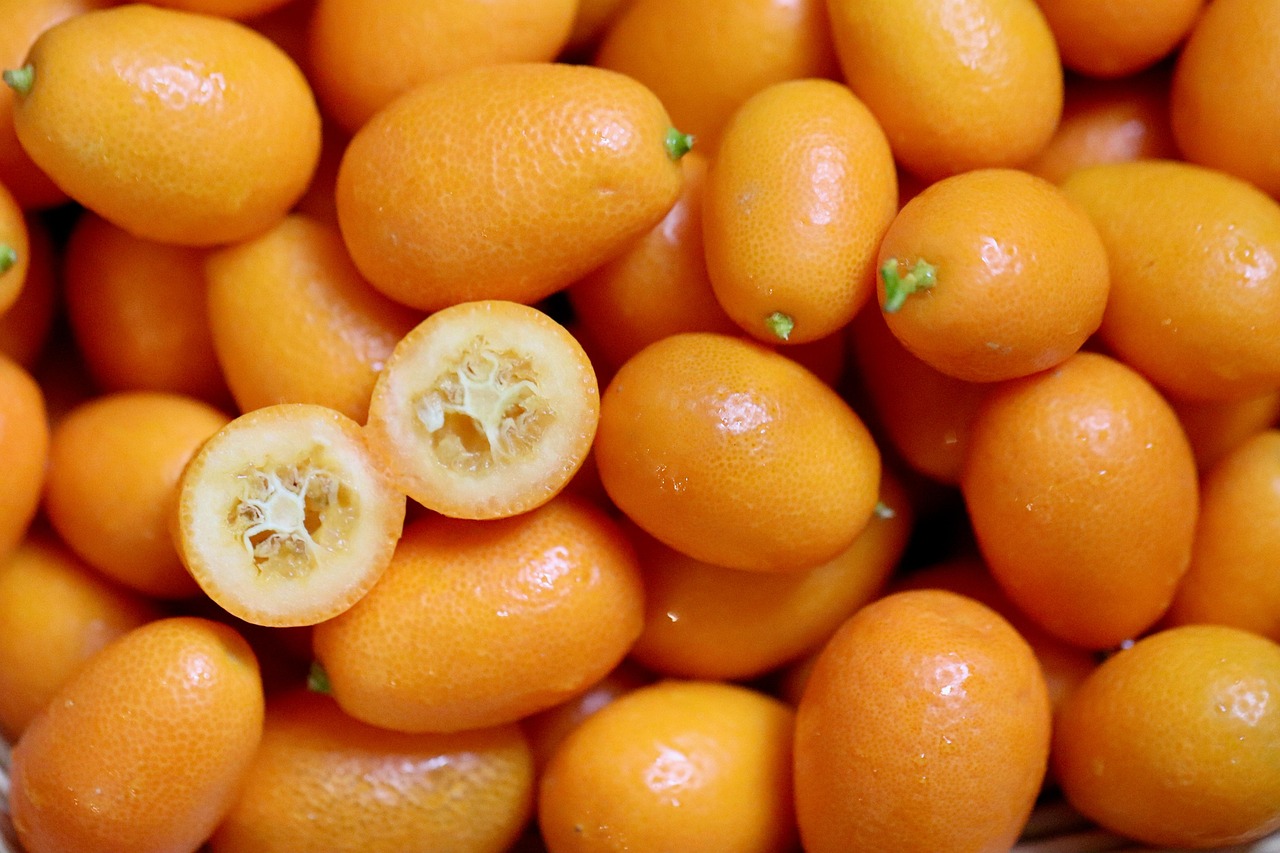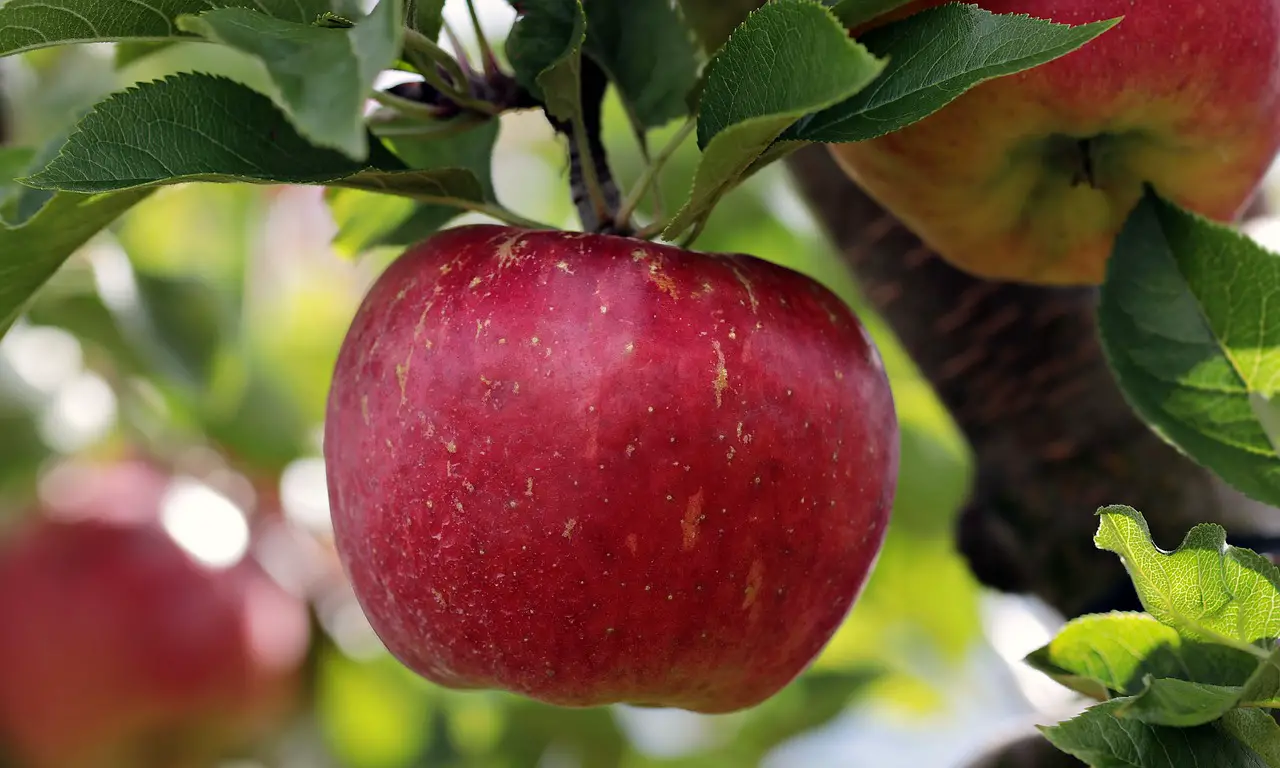Specialized pruning techniques for dwarf fruit trees are essential for promoting healthy growth, improving fruit quality, and maximizing yield. These techniques help manage tree size, enhance sunlight exposure, and maintain an ideal shape for easy harvesting.
Dwarf fruit trees have gained popularity among gardeners and orchardists due to their compact size and high productivity. Unlike standard fruit trees, dwarf varieties are designed to grow smaller, making them ideal for limited spaces such as urban gardens and patios. Their reduced height allows for easier maintenance and harvesting, but proper pruning is crucial to ensure they thrive.

Pruning plays a vital role in the health and productivity of dwarf fruit trees. It involves the selective removal of specific parts of the tree, such as branches and leaves, to encourage better growth and fruit production. By utilizing specialized pruning techniques, gardeners can shape their trees effectively while preventing diseases and pests.
Understanding Dwarf Fruit Trees
Dwarf fruit trees typically reach a height of 3 to 8 feet, depending on the variety. They are often grafted onto dwarfing rootstocks, which control their size while still producing full-sized fruits. There are several types of dwarf fruit trees, including:
- Apple
- Pear
- Peach
- Cherry
- Citrus
Each type has its unique characteristics and requires specific care. Understanding these differences is essential for successful pruning and overall tree management.

Benefits of Specialized Pruning Techniques
Employing specialized pruning techniques offers numerous benefits for dwarf fruit trees. Some of these advantages include:
- Enhanced Sunlight Exposure: Proper pruning allows sunlight to reach all parts of the tree, promoting even growth and better fruit development.
- Improved Air Circulation: Thinning out dense branches reduces humidity levels within the tree. This helps prevent fungal diseases.
- Encouraged Fruit Production: Pruning can stimulate new growth, leading to increased flowering and fruit set.
- Easier Harvesting: Maintaining a manageable shape makes it simpler to pick fruit without the need for ladders.
Key Pruning Techniques for Dwarf Fruit Trees
There are several specialized pruning techniques that can be applied to dwarf fruit trees. Each method serves a distinct purpose in shaping the tree and promoting its health.
Crown Thinning
Crown thinning involves selectively removing branches from the upper canopy of the tree. This technique helps reduce overcrowding while allowing more light to penetrate the interior of the tree. Thinning should be done carefully to avoid removing too many branches at once, as this can stress the tree.

Crown Raising
Crown raising is the process of removing lower branches to create a clear trunk. This technique can enhance air circulation and make it easier to access the fruits. It is particularly useful for trees planted in small spaces, where low-hanging branches can interfere with other plants or structures.
Crown Reduction
Crown reduction involves cutting back the height of the tree. This is especially important for dwarf trees that may still grow taller than desired. By reducing the crown, gardeners can maintain the tree’s size while encouraging lateral growth.
Pinching and Heading Back
Pinching refers to removing the tips of young shoots, which encourages bushier growth. Heading back involves cutting back longer branches to a bud or lateral branch. Both techniques help shape the tree and promote a more balanced structure.

Timing Your Pruning
The timing of pruning is crucial for maximizing the benefits of these techniques. Generally, late winter or early spring is the best time to prune dwarf fruit trees before they break dormancy. This timing helps minimize stress on the tree and allows for vigorous growth in the upcoming growing season.
However, summer pruning can also be beneficial for maintaining shape and controlling growth. It is essential to monitor the tree’s health and adjust your pruning schedule accordingly.
Common Mistakes in Pruning Dwarf Fruit Trees
Even experienced gardeners can make mistakes when pruning dwarf fruit trees. Some common errors include:
- Over-pruning: Removing too many branches can shock the tree and reduce fruit production.
- Improper cuts: Making clean cuts at the right angles is essential for preventing damage and promoting healing.
- Ignoring tree shape: Failing to maintain a balanced shape can lead to uneven growth and poor fruit quality.
By being aware of these mistakes and employing proper techniques, gardeners can ensure their dwarf fruit trees remain healthy and productive throughout their lives.
Tools for Pruning Dwarf Fruit Trees
Having the right tools is crucial for effective pruning. Using proper equipment not only makes the task easier but also ensures clean cuts that promote healing. Here are some essential tools for pruning dwarf fruit trees:
- Hand Pruners: Ideal for cutting small branches and stems. They provide precision and control.
- Loppers: These are used for larger branches that are too thick for hand pruners. They offer greater leverage and reach.
- Saws: A pruning saw is necessary for cutting thicker branches. A small, curved saw is often best for this purpose.
- Shears: Best for shaping and trimming smaller foliage and floral growth.
- Safety Gear: Always wear gloves and protective eyewear to prevent injuries while pruning.
Before starting, ensure that all tools are sharp and clean. Dull tools can damage branches and increase the risk of disease. Disinfecting tools between trees is also important to prevent the spread of pests or diseases.
Understanding Tree Growth Patterns
To effectively prune dwarf fruit trees, it’s essential to understand their growth patterns. Dwarf fruit trees typically exhibit two types of growth:
- Vegetative Growth: This refers to the growth of leaves and branches. It is crucial for photosynthesis and overall tree health.
- Fruiting Growth: This involves the production of flowers and fruits. Proper pruning encourages a balance between vegetative and fruiting growth.
A good pruning strategy should promote healthy vegetative growth while maximizing fruit production. Understanding these patterns will allow you to make informed decisions about where and how to prune.
Seasonal Considerations for Pruning
Different seasons provide unique opportunities for pruning dwarf fruit trees. Each season affects tree growth in various ways:
Winter Pruning
During winter, trees are dormant. This is an ideal time for major pruning because it minimizes stress on the tree. Winter pruning helps shape the tree before the growing season begins. It also allows gardeners to see the tree’s structure more clearly without leaves obstructing the view.
Spring Pruning
Spring is another good time for pruning, especially for light maintenance. As the tree begins to grow, you can remove any dead or damaged branches. This encourages healthy new growth and prepares the tree for fruiting.
Summer Pruning
Summer pruning focuses on maintaining shape and controlling growth. It can be particularly useful for removing water sprouts—vigorous shoots growing vertically that can hinder fruit production. Summer pruning should be done carefully to avoid stressing the tree during its active growth phase.
Fall Pruning
Fall is generally not recommended for significant pruning as it can encourage new growth that may not survive winter conditions. However, minor clean-up can be performed to remove any damaged or diseased branches before winter.
Specific Techniques for Different Fruit Varieties
Each type of dwarf fruit tree has specific pruning needs based on its growth habits and fruiting characteristics. Here are some techniques tailored to popular varieties:
Dwarf Apple Trees
Dwarf apple trees benefit from a central leader system, where one main trunk is encouraged. This helps create a strong structure capable of supporting fruit. Prune in a way that maintains this leader while removing competing shoots, especially those growing inward toward the center.
Dwarf Peach Trees
Dwarf peach trees produce fruit on one-year-old wood. For this reason, it’s important to prune them to encourage new growth each year. Focus on thinning out older branches while keeping younger ones that will bear fruit.
Dwarf Cherry Trees
Dwarf cherry trees should be pruned lightly because they tend to be sensitive to heavy pruning. Aim to remove dead or diseased wood and thin out crowded areas to improve air circulation.
Post-Pruning Care
After pruning, providing care for dwarf fruit trees is essential to support recovery and promote healthy growth. Here are some post-pruning practices:
- Watering: Ensure the tree receives adequate water after pruning, especially during dry spells. Proper hydration supports new growth.
- Fertilizing: Apply a balanced fertilizer in early spring to give the tree nutrients it needs for vigorous growth.
- Pest Control: Monitor for pests or diseases that may take advantage of the tree’s stress post-pruning. Implement appropriate pest management strategies if needed.
- Mulching: Adding mulch around the base of the tree helps retain moisture, suppress weeds, and regulate soil temperature.
Caring for your dwarf fruit trees after pruning is just as important as the pruning itself. These practices will help ensure your trees remain healthy and productive throughout their growing seasons.
Understanding Tree Anatomy for Effective Pruning
To effectively prune dwarf fruit trees, it is important to understand the basic anatomy of the tree. Familiarizing yourself with the various parts of the tree can help you make better pruning decisions that promote health and productivity.
Key Components of a Dwarf Fruit Tree
A dwarf fruit tree consists of several key components:
- Roots: The root system anchors the tree and absorbs water and nutrients from the soil. Healthy roots are crucial for the overall vitality of the tree.
- Trunk: The trunk provides structural support, allowing the tree to grow tall and bear fruit. Proper pruning helps maintain a strong trunk.
- Branches: Branches extend from the trunk and support leaves and fruit. They can be categorized into primary, secondary, and lateral branches.
- Leaves: Leaves are essential for photosynthesis, converting sunlight into energy for the tree’s growth.
- Flowers: Flowers are critical for fruit production. Proper pruning encourages healthy flowering and fruit set.
- Fruit: The end goal of pruning is to enhance fruit production. Understanding how and when fruit forms can aid in effective pruning strategies.
By knowing these components, gardeners can make informed decisions on how to prune specific parts of the tree without causing harm.
The Role of Hormones in Tree Growth
Tree growth and development are regulated by hormones. Understanding how these hormones work can provide insight into effective pruning techniques.
Types of Hormones
The main hormones involved in tree growth include:
- Auxins: These hormones promote cell elongation and are concentrated at the tips of growing shoots. They play a significant role in directing growth towards light.
- Cytokinins: These hormones promote cell division and growth. They are found in areas of active growth, such as young leaves and fruits.
- Gibberellins: These hormones stimulate stem elongation and flower development. They are essential for fruit development in some species.
- Ethylene: This hormone is involved in fruit ripening and growth cessation. It affects how trees respond to stress.
When pruning, it is essential to consider these hormones because cutting back certain branches can influence hormone distribution, affecting overall tree health and growth patterns.
Pruning Techniques Based on Growth Stage
The growth stage of a dwarf fruit tree significantly impacts pruning techniques. Different stages require different approaches to ensure healthy development.
Young Trees
For young dwarf fruit trees, the primary goal is to establish a strong framework. Key techniques include:
- Establishing a Leader: Choose a central leader and remove competing shoots to promote vertical growth.
- Initial Shaping: Gently shape the tree to encourage lateral branching while maintaining balance.
- Thinning Out: Remove any damaged or weak branches to allow for better air circulation and sunlight penetration.
Mature Trees
Mature dwarf fruit trees require maintenance to ensure continued health and productivity. Important techniques include:
- Renewal Pruning: Remove older branches that are less productive to encourage new growth that will bear more fruit.
- Maintenance Pruning: Regularly thin out crowded areas and remove any dead or diseased wood to maintain overall vigor.
- Suckering Management: Remove suckers that grow from the base or roots, as they can drain energy from the main tree.
Older Trees
Older dwarf fruit trees may require more intensive care to rejuvenate them. Consider these techniques:
- Severe Pruning: In some cases, drastic cuts may be necessary to stimulate new growth. This should be done cautiously and ideally over a few seasons.
- Restoration Techniques: Focus on restoring balance by reducing height and removing excessive lateral branches that may have formed over the years.
- Sustaining Health: Monitor for pest infestations or diseases that may have developed over time due to neglect.
The Importance of Aesthetics in Pruning
Aesthetics also play a role in pruning dwarf fruit trees. A well-pruned tree not only looks appealing but also functions better in terms of health and productivity. Here are some points to consider:
- Symmetry: Aim for a balanced shape that enhances the tree’s natural structure while allowing for maximum sunlight exposure.
- Open Center Design: Consider pruning techniques that promote an open-center design, especially for peach and cherry trees. This encourages airflow while enhancing visual appeal.
- Seasonal Beauty: Pruning can enhance the seasonal beauty of your trees by allowing flowers to bloom fully and fruits to hang gracefully.
Caring for both the functional and aesthetic aspects of dwarf fruit trees ensures they remain a delightful addition to any garden space, offering both beauty and bounty.
Advanced Pruning Strategies for Specific Varieties
While general pruning techniques are beneficial, advanced strategies tailored to specific dwarf fruit tree varieties can enhance fruit production and tree health even further. Understanding the unique growth habits and fruiting patterns of different varieties allows gardeners to make informed decisions that maximize results.
Dwarf Apple Trees
For dwarf apple trees, employing a technique known as spindle training can be particularly effective. This method encourages a vertical growth habit, which maximizes sunlight exposure and air circulation:
- Spindle Form: Aim for a single, upright central leader with well-spaced lateral branches. Prune to maintain this shape.
- Shorten Lateral Branches: Cut back lateral branches to encourage fruiting spurs, which are essential for apple production.
- Regular Maintenance: Perform light pruning annually to remove any dead wood and thin out overcrowded areas.
Dwarf Pear Trees
Dwarf pear trees benefit from a slightly different approach. Focus on maintaining a well-structured framework that allows for heavy fruit loads:
- Open Center Method: Create an open center to allow sunlight to reach the interior, promoting healthier fruit development.
- Fruit Spur Management: Encourage spurs on older wood by selectively pruning younger branches that compete for resources.
- Thinning: Thin out excessive fruit during the early growing season to prevent branches from breaking under the weight of too many pears.
Dwarf Cherry Trees
Dwarf cherry trees require careful management to ensure they produce quality fruit while maintaining their shape:
- Light Pruning: Avoid heavy pruning; instead, focus on light thinning to maintain overall health.
- Remove Water Sprouts: These vigorous shoots can sap energy from the tree and should be removed promptly.
- Pest Monitoring: Keep an eye out for pests, especially as cherries are prone to certain infestations. Prune any affected areas immediately.
Environmental Factors Influencing Pruning Decisions
Understanding environmental factors can significantly influence pruning practices. Soil quality, climate conditions, and local pests can all affect how and when you should prune your dwarf fruit trees.
Soil Quality
The quality of the soil in which your dwarf fruit trees grow plays a crucial role in their health and productivity. Consider the following:
- Nutrient Levels: Conduct regular soil tests to monitor nutrient levels. Adjust fertilization practices according to test results.
- Drainage: Ensure proper drainage in the planting area. Poorly drained soils can lead to root rot, affecting tree health.
Climate Considerations
The local climate will significantly impact your pruning schedule. Trees in warmer climates may require different care compared to those in cooler regions:
- Frost Dates: Be aware of local frost dates when planning your pruning. Prune before the last expected frost date in spring.
- Heat Stress: In extremely hot climates, consider summer pruning to manage tree size while reducing heat stress during peak temperatures.
Pest and Disease Management through Pruning
Pest and disease management is an integral aspect of maintaining healthy dwarf fruit trees. Effective pruning can help mitigate these issues:
- Removing Infected Wood: Always remove any branches showing signs of disease immediately to prevent spread.
- Encouraging Airflow: Proper pruning techniques that promote airflow between branches can reduce humidity levels, making conditions less favorable for fungal diseases.
- Pest Traps: Consider using traps or barriers around trees to deter pests that target fruit trees.
Final Thoughts
Specialized pruning techniques for dwarf fruit trees are essential for maximizing their health, productivity, and aesthetic appeal. By understanding tree anatomy, growth patterns, and environmental factors, gardeners can tailor their approaches to meet the specific needs of each variety. Advanced strategies, such as spindle training for dwarf apple trees or open-center designs for dwarf pears, can yield impressive results.
Caring for dwarf fruit trees involves more than just pruning; it encompasses proper watering, fertilizing, and pest management as well. A holistic approach ensures that these trees not only thrive but also provide beautiful blooms and bountiful harvests. As you embark on your journey with dwarf fruit trees, remember that patience and observation are key. With time and care, your efforts will reward you with delicious fruits and an attractive garden space.
